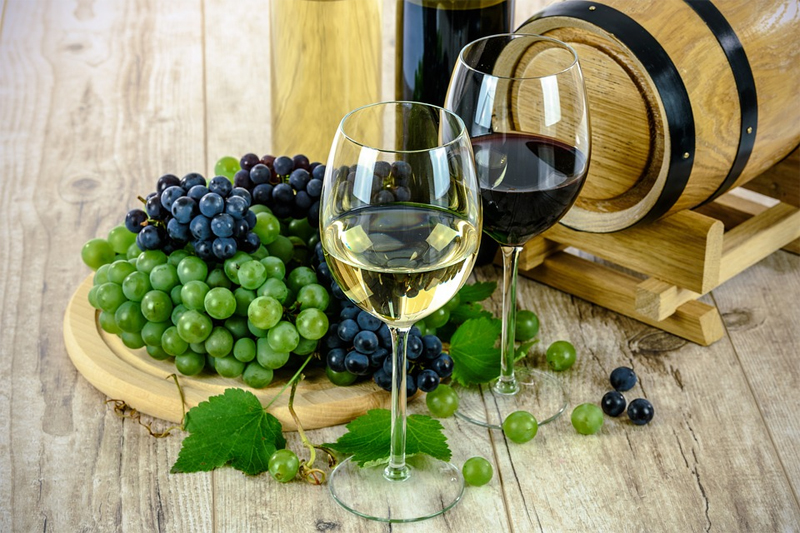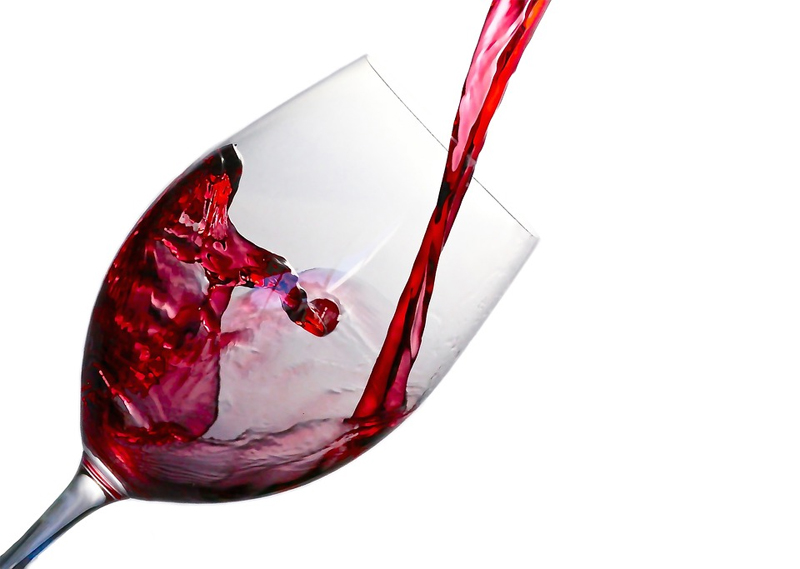
Assess Wine by Your Sense of Sight
- Straight Angle View: One of the first things that you need to do in terms of wine tasting is to assess the wine visually. The wine enthusiasts from SingleThread Wines suggest that you inspect the wine under neutral lighting, scrutinizing its color, opacity, and viscosity. As much as possible, your glass should be about a third full before you begin inspecting it from a straight angle view. In this case, you need to look straight down into the glass before holding it to the light, giving it a slight tilt. With the tilt, the wine will roll towards its edges, enabling you to see the complete color range of the wine, rather than only seeing through the dark center. This will also give you a clue regarding the density and saturation of the wine.
- Side and Tilted View: Apart from a straight angle view, you can also visually inspect the wine through a side view or a tilted view. In terms of the former, you will just need to view the wine through the side of the glass while you hold it to the light. This will give you an idea of the clarity of the wine because a murky one might be a result of a chemical or fermentation problem. In terms of the latter, tilting the glass will cause the wine to thin out toward the rim. This provides you with a clue regarding the wine’s age and weight. You can also swirl the glass to see whether the wine will form legs or tears on the side of the glass. Typically, good legs indicate a higher alcohol or glycerin content.
Evaluate Wine by Your Sense of Smell
Another way to evaluate a good wine is by using your sense of smell to do so. Typically, you will be able to categorize wine by its aroma based on three classifications which include the primary, secondary, and tertiary aromas.
- Primary Aroma: A wine derived mostly from grapes will give out a fruity and floral note, which is considered as the primary aroma. A fruity aroma is more prevalent on warm vineyards, while a stronger floral scent is present in wine extracted from grapes grown in cool climates. This is because the grapes grown in these conditions are known to carry herbal or grassy scents. In certain cases, you may even smell an earthy note that can help you determine the place of origin of the wine. If you’re looking to explore the world of wine and learn more about the characteristics of different grapes, then wine tours & tastings in Provence are perfect for you. The region is known for its beautiful wineries and stunning landscapes that will transport you into a
completely new place. You can also take part in exclusive tasting experiences, where you can enjoy some of the best wines from around the world.
- Secondary Aroma: The secondary aroma is a result of the wine-making practices, such as the infusion of yeast and its derivative. This scent is usually found on young white wines, as well as young sparkling wines. There are also dessert wines that smell strongly of honey, which is evidenced by botrytis. Another notable secondary aroma can be likened to the smell of buttered popcorn or caramel that is a result of malolactic fermentation.
- Tertiary Aroma: This wine aroma category is often a result of the aging process. In this case, the wine may smell like roasted nuts or baking spices, as well as vanilla or autumn leaves, which are mostly savory. Depending on various factors such as the type of oak, or the way that the barrels were made, the scent that the wine gives off may greatly vary.

Measure Wine by Your Sense of Taste
Your tongue can decipher a salty, sour, sweet, or even bitter taste. Usually, all types of wines would have a sour taste, which can be due to the acid contained in the grapes. But there are grape varieties that are known for their bitter taste, while others retain their natural sweetness. Aside from the taste, you will also be able to assess the texture of the wine by tasting it. The rich texture is a sign that the wine is riper and has a higher alcohol content. You can use your sense of taste in determining whether a wine is balanced, harmonious, complex, or complete.
- Balanced: A wine is balanced if it has its basic flavor components in the right proportion, such that you will be able to detect all sweet, sour, salty, and bitter tastes. While it is true that the formula in making wines may vary, a good wine should always have a balance of these flavors. Thus, it should not be too sour, sugary, astringent, hot, bitter, or flabby for the lack of acid.
- Harmonious: A wine that has all its flavors well integrated is considered harmonious. This quality is achieved through the proper aging because some of the young wines may have all the components present in good proportion, but each stick out, instead of being blended well together. A quality wine will have all its flavors harmoniously blended.
- Complex: A wine that seems to have a change in its taste even while you are in the process of tasting it is considered as a complex wine. In this case, all the flavors of the wine may seem to dance in your mouth, lingering even after you have swallowed it. Thus, in wine tasting, it is important to let the wine linger in your mouth for a while to ensure that you get an accurate taste of it before you take your next sip.
Once the wine is balanced, harmonious, and complex, then you are sure that you have a high-quality wine.
Aside from relying on your sense of taste, you also need to incorporate your other senses to evaluate the quality of the wine. In this case, you also need to leverage your sense of sight and smell for you to be able to come up with a conclusion regarding the wine that you have tasted. Rest assured that the best wines will never disappoint any of your senses.
Comments
comments